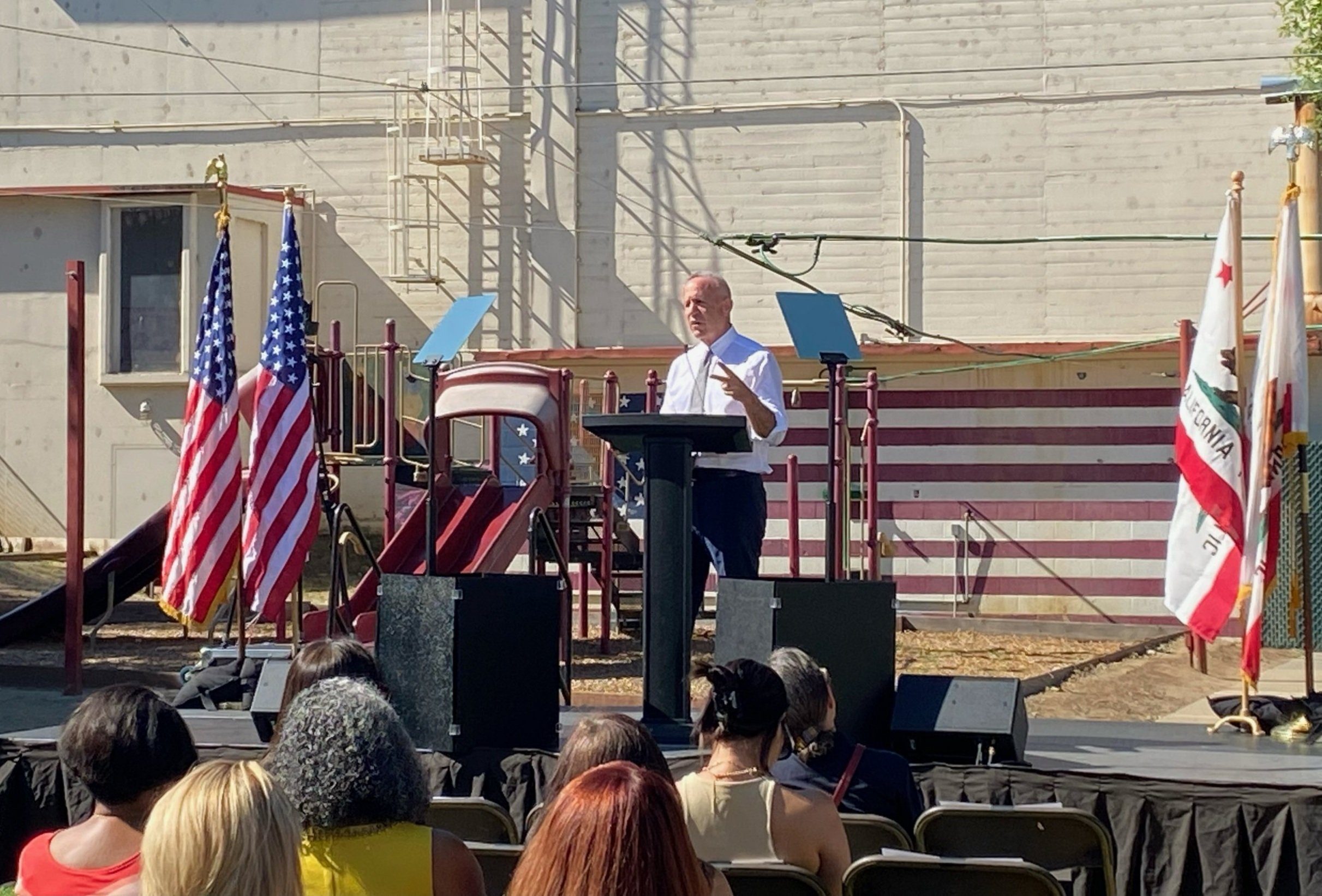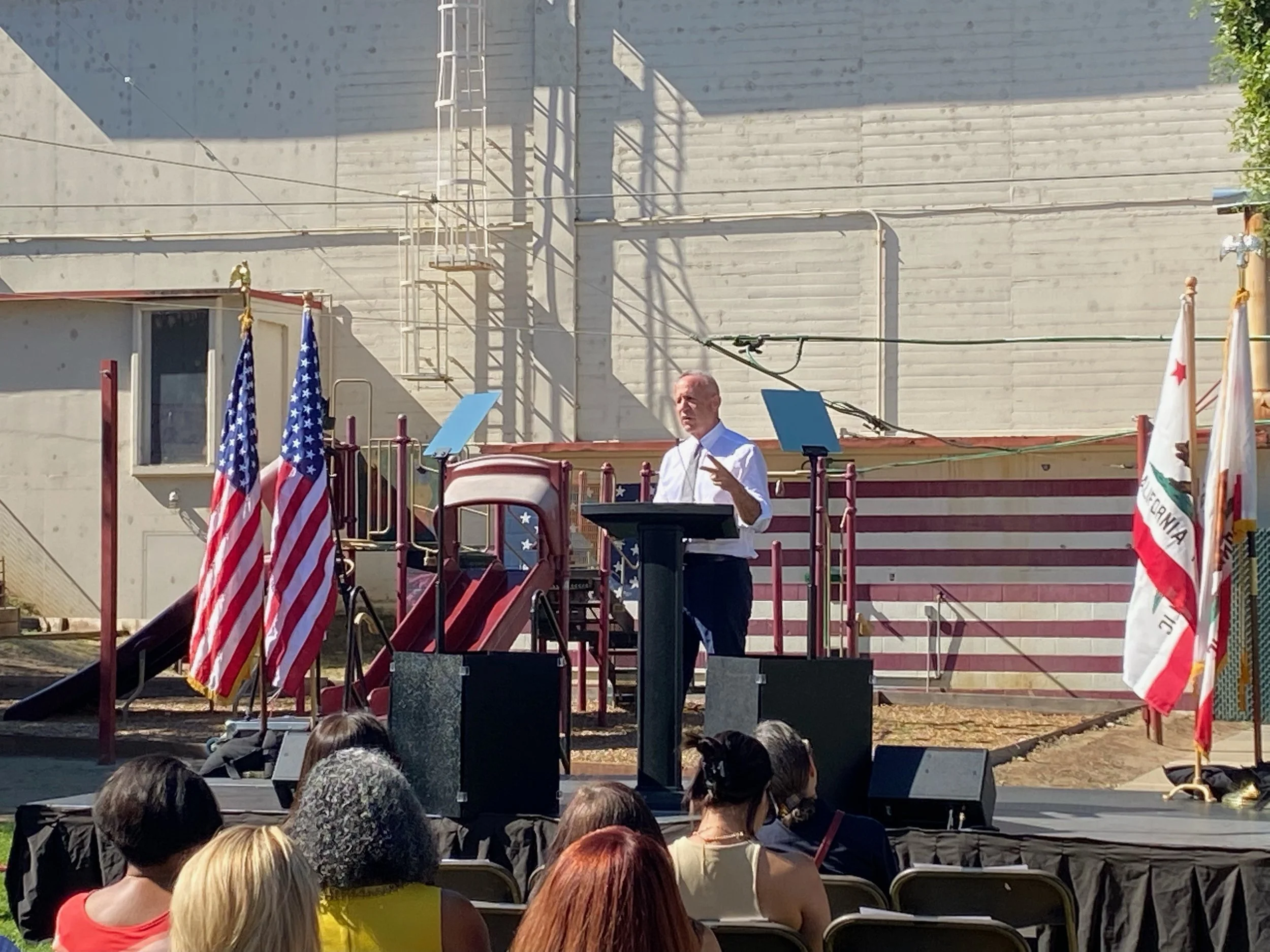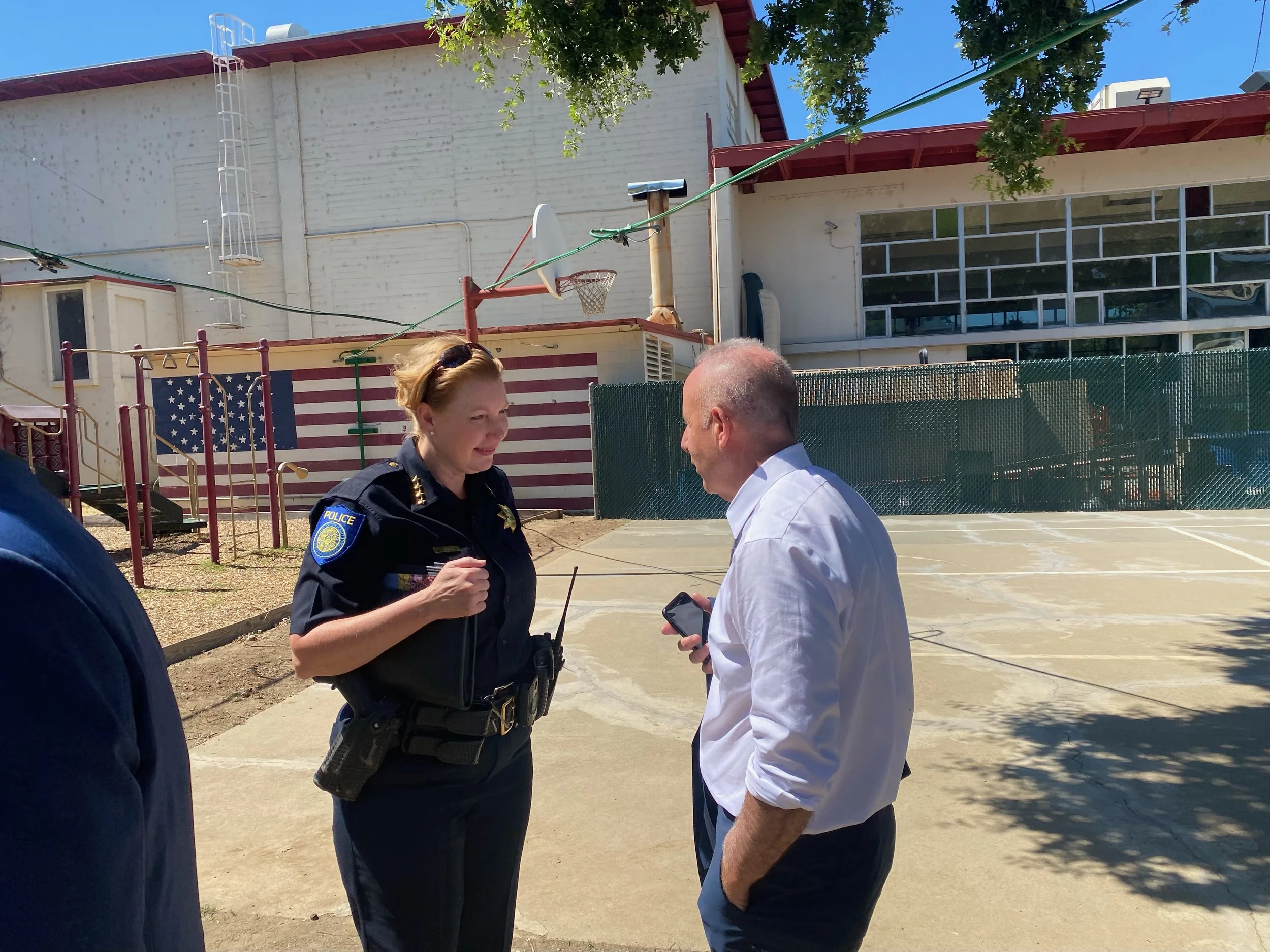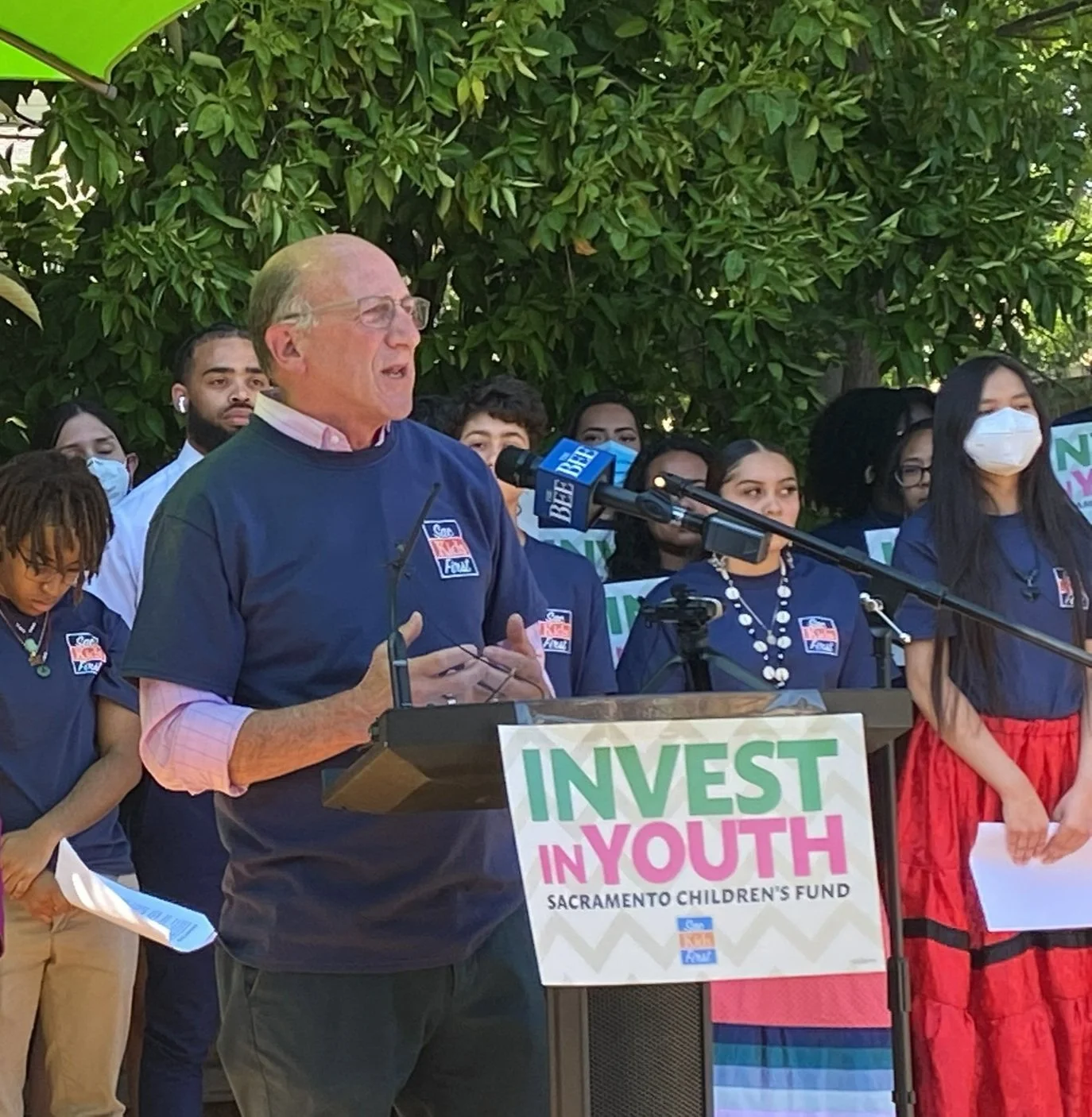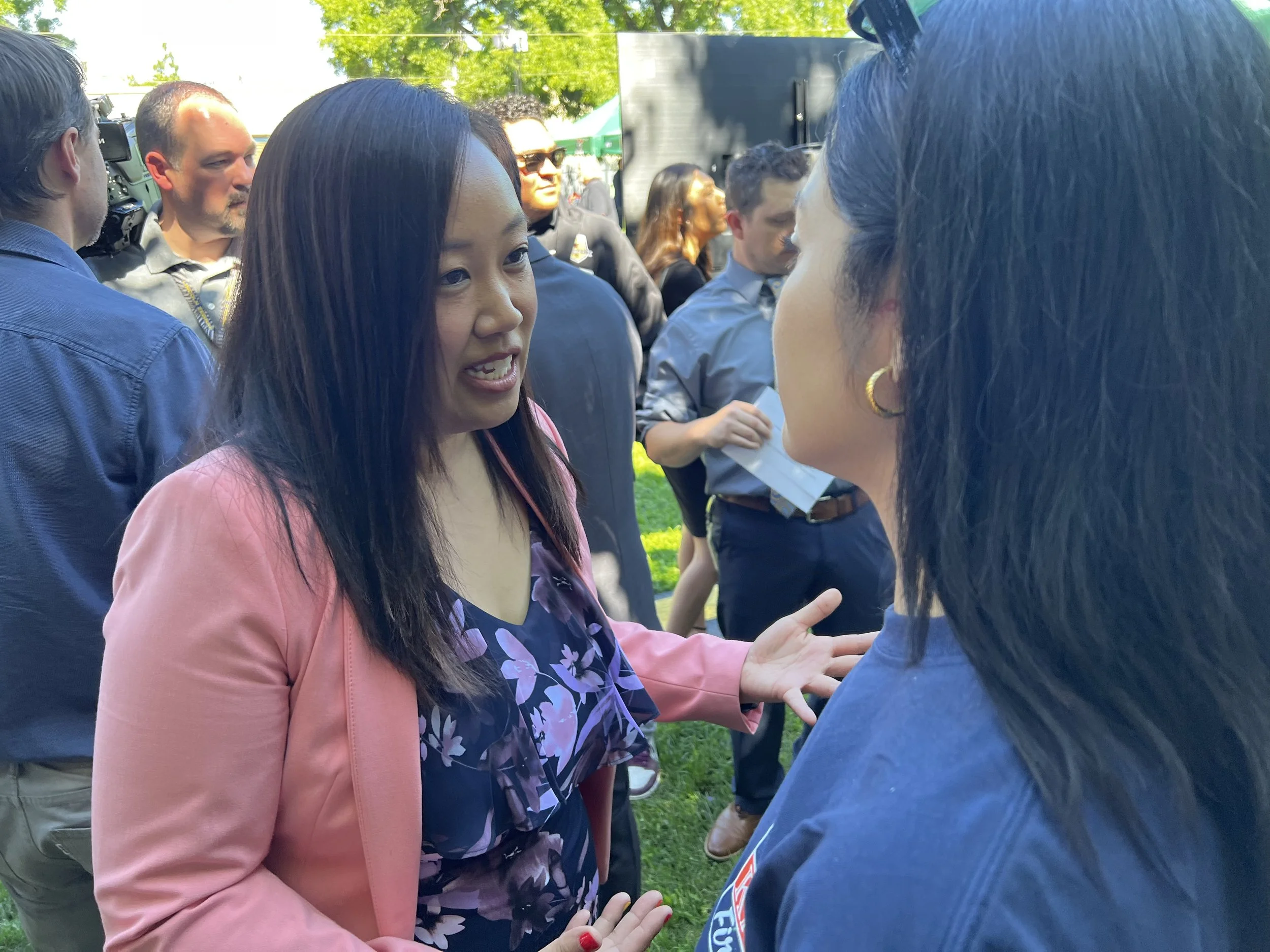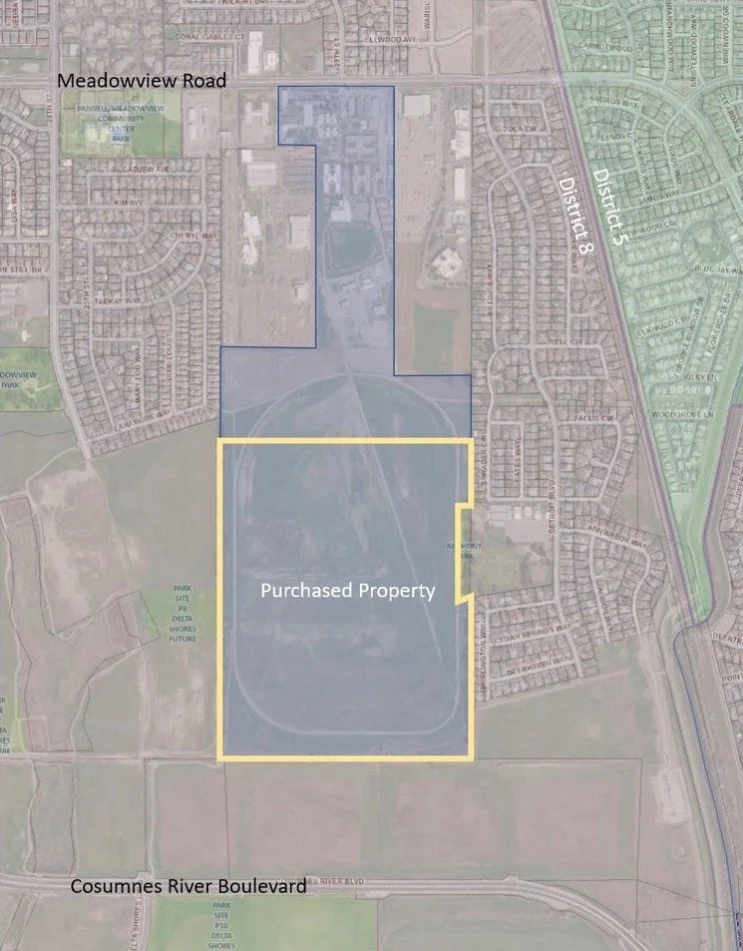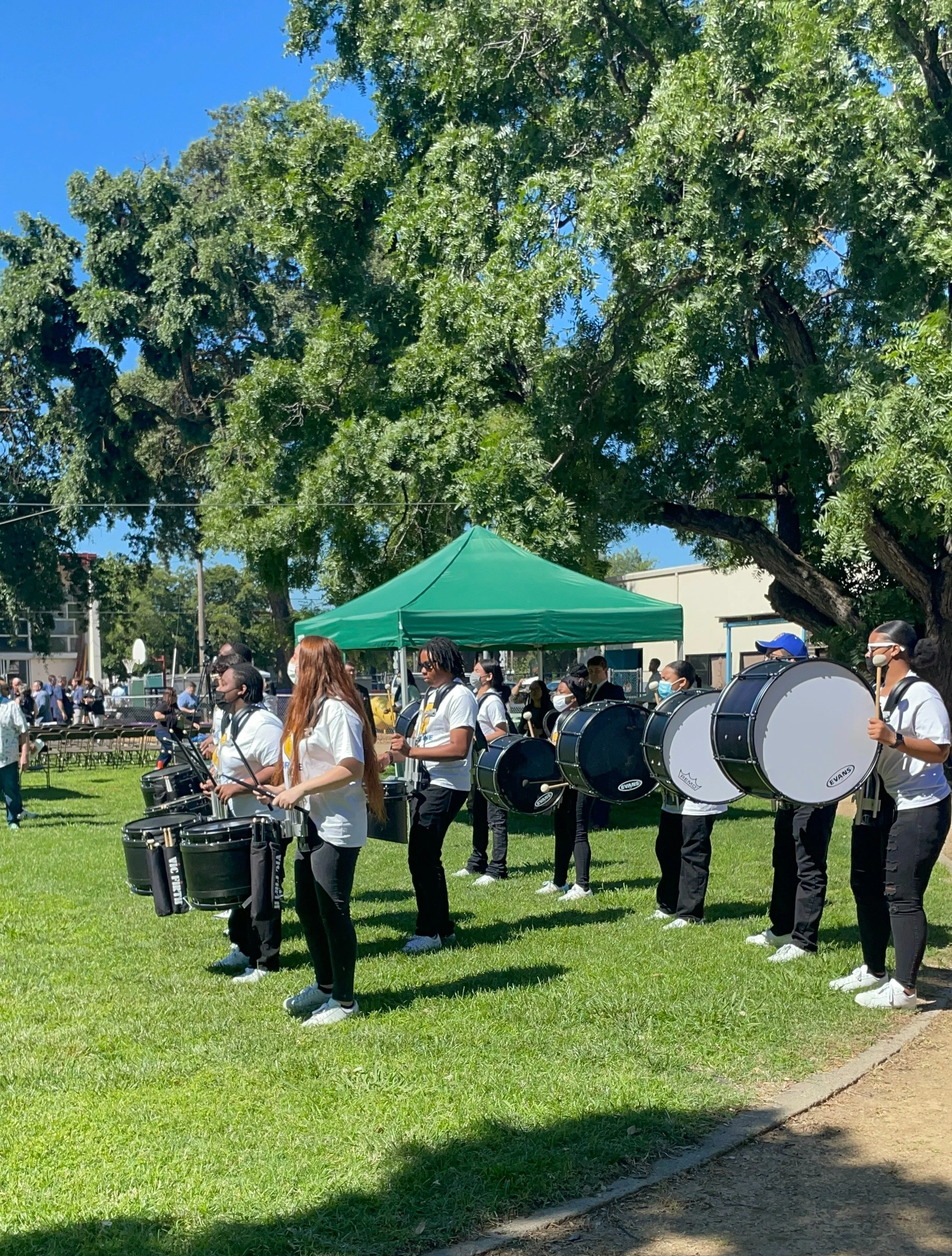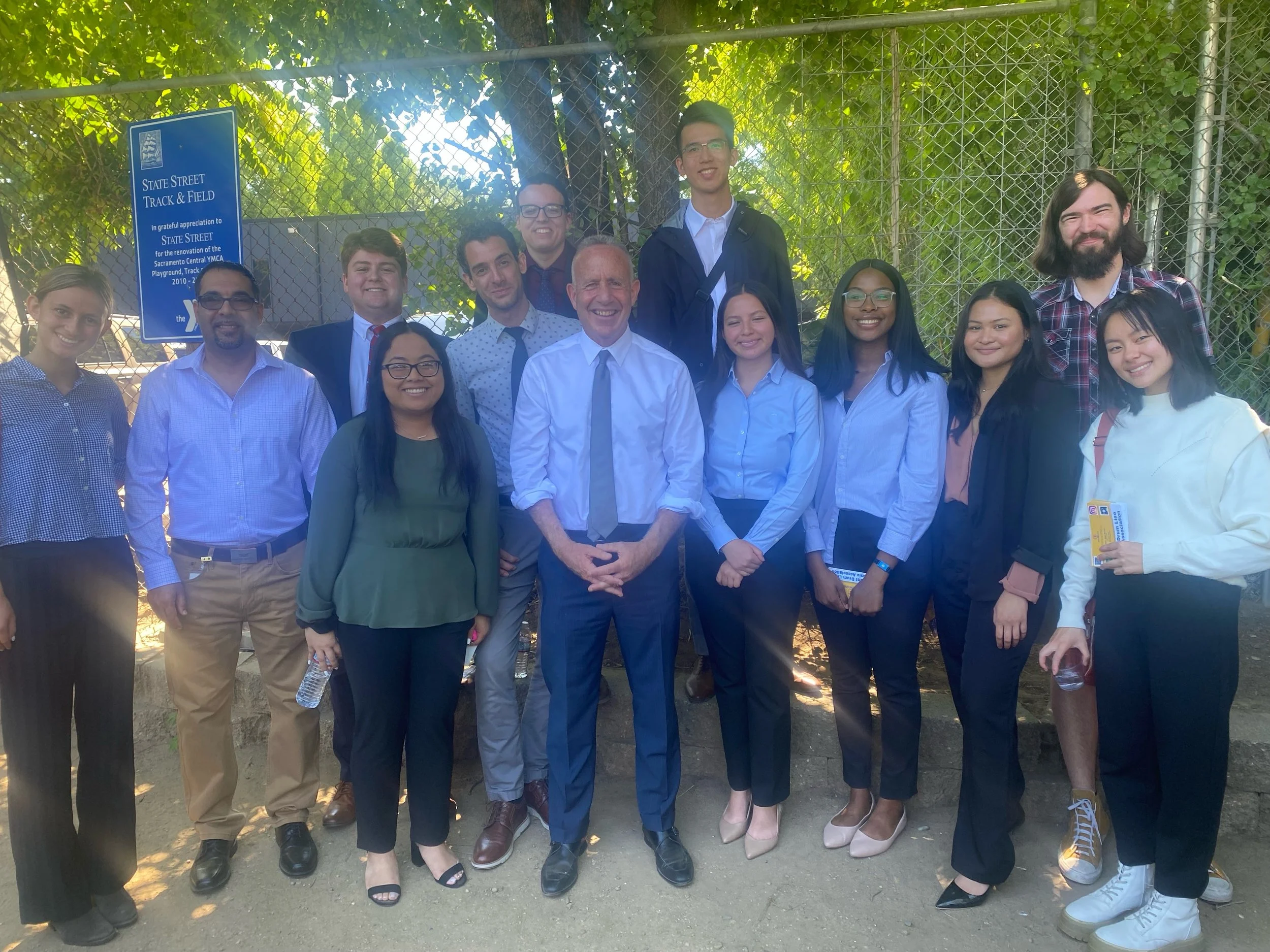Read Mayor Darrell Steinberg's 2022 State of the City Speech
Mayor Steinberg Wednesday delivered the 2022 State of the City from the YMCA on W Street. Read the text of the prewritten speech below. You can also watch a livestream of the event here. Leer en Español aquí
I have so many memories from my 62 years on this planet. So how is it that there are moments of my childhood that I can still see so clearly today? I close my eyes and can picture the time when I was 13 years old and drove down the left side of the key to score the winning basket for Taylor Middle school against Burlingame Intermediate? Or the time I was 8 and caught a long fly ball over my head to rob my friend Jimmy of a home run. Or my first teenage job as a rec leader. Or 10 similar childhood memories, most related to sports, but not all.
Fifty years later, my old grade school friends have the same vivid memories.
I grew up very middle class in the Bay Area. I graduated high school in 1977, the year before Prop 13 passed and funding for schools and kids changed forever. We weren’t rich, but my childhood sure was. I was always busy with some sport or organized activity. I never had time to get in trouble even if I wanted to.
What’s changed over these many decades? I do not idealize the past, but the world has changed, Some things have changed for the better. Many other things, not so much.
The pressures on young people are immense. They are attempting to navigate a much harsher and more impersonal world. There is too damn much social media. Their challenges are different today.
Most of my generation never worried about school shootings or pandemics, or anxiety and depression, or even the basics of life. They now ask, will we ever be able to buy a home, or even rent one? There are other differences as well. Income inequality has soared, and at the same time the price of participation in sports and other extracurricular activities has risen to hundreds and even thousands of dollars. Arts, theater, music, and other enrichment programs are no longer a given in public schools. And government budgets have been pinched, making it hard for youth investments, vital as they are, to compete for funding.
Forty plus years of intervening research tells us what kids need to thrive. We know that having an adult mentor – a teacher, coach, a counselor or someone else, plus programs and activities they are passionate about, is a key to a good childhood and preparation for adult life. It’s where children learn life lessons; hard work, teamwork, empathy, perseverance, winning with humility, losing with grace. These formative experiences matter. And it’s where great memories are made too.
Not every child gets those memories. Often, the kids who could benefit most from these opportunities have the least opportunity to take advantage of them.
So I want to take a different approach to the sometimes forgettable routine of describing the current state of the city. Instead of focusing primarily on 2022, I want to pose a different question. What will be the state of the city in 2032 and 2042?
Answering that question does not take some eye raising superpower.
I like the story about the old wise man and the little bird. He was a great sage who could predict everything accurately, from when it would rain to timely plant the crops to when there would be frost to begin the harvest. A little boy doubted the sage’s abilities, and he decided to trick him. The boy found a bird, grabbed it and held it behind his back. He approached the sage and asked, “Is the bird I have behind my back dead or alive?" If the sage said dead,
the boy would release the bird. If the sage said alive, well….the poor bird. The sage considered the boys question, thought for a moment, and simply said: “Young man, the answer is in your hands.”
What will be the state of the city in 2032 and 2042? The answer is truly in our hands.
The place where we stand today is a great example of what can happen when we take the future into our own hands. I want to thank YMCA CEO Sharna Brauks and all her great staff and board members here who graciously agreed to let us use this facility this morning.
The Y has been operating here in Sacramento since 1866, when the city’s early residents started it as a residence for those who were struggling to get by. Today the Y serves more than 30,000 people a year, 40 percent of them low to median income– and it’s not just swim lessons and sports. They run the youth in government program, childcare, mental health and social services for young people and seniors. They spent hundreds of thousands of dollars in 2021 to make sure everyone could participate, regardless of means.
Together with councilmember Katie Valenzuela, they are taking a bold step that will put this Y in a position to have an even greater impact for good 10 and 20 years from now. They’re looking for a developer to build a new Y on this site with a childcare center and eight stories of affordable housing for families experiencing homelessness. They own the land and are confident they can pull this off. I have no doubt.
Creativity, adaptation, and will. The city is here to help you.
The future really is in our hands. I’ve learned over my decades of service that bills and ordinances, programs, and new investments take years to show impact. Mistakes similarly don’t always reveal themselves immediately. The time any of us spend in public and community life is dominated by doing the best we can to respond to the urgent problems people face in the moment. These past few years have been extraordinary, both in the unprecedented nature of the stress on our community and our country, and in the rich and meaningful ways we have responded.
The present matters, and I am proud of our City for the way it has risen to meet these historic times. We haven’t shied from homelessness. We are not a health and human services agency like the county, and yet we have increased our shelter and Safeground capacity from less than 100 to 1,100 per night. We have dramatically increased permitting and construction of the affordable housing we so badly need, going from 481 units a year in 2018 to more than 2,000 annually. We have 644 affordable units under construction right now.
Covid has battered the economy, and yet we have balanced our budgets, maintained stable and effective public safety services, other core services, and have put more city, state, and federal funding into the community; for housing, for small business, for arts and creative economy, for our neighborhood commercial corridors, and more….we passed a major climate and electrification ordinance, all during a pandemic.
We are embracing the racial reckoning in our society with purpose and commitment by embracing one another, our history and writing the future together.
The city is gaining more vibrancy by the day with more art, more music festivals, and more theatre than ever.
We’ve launched major jobs initiatives like Aggie Square, North State Hospital, and the California Mobility Center.
And yes, we have major challenges. Crime is up in our city as it is throughout the country. We lived through the worst mass shooting in our city's history on a busy Saturday night in our still recovering downtown.
People are struggling economically with high gas prices, and they are struggling emotionally with real concerns about the state of our community and country, including the democracy itself.
I’m always inspired by artist Alex Trujillo's signs I see posted around the city. Every day is your chance to make this city a little better.
It was only 3 years ago that Sacramento went two straight years without a single youth homicide. We must not give up on reclaiming that proud moment in time.
There has been a lot of commentary over the past week locally, statewide and nationally about homelessness, crime, and safety, whether people want stronger law enforcement or more investments to help people in need.
People want both. They want balance and common sense. They want to feel safer in their neighborhoods and they want to help their vulnerable neighbors. They want the police to be in real partnership with the community.
I fully support Chief Lester’s new proactive policing initiative, that uses real data to focus our resources in the 7 square miles of the city where crime and gun violence is the highest. This focused strategy gives us the best chance to get thousands of illegal guns off our streets.
The people want us to continue building a city that models strength, personal responsibility, kindness, and caring for one another. That’s the city we are building together even if we can’t always see its completion in real time. The writer Ralph Waldo Emerson said that "the days do not always reveal what the years can see."
If we cannot always control what life brings us in the present days, we have the chance now to change the course and direction of our city for the better for the years and decades to come.
How do I know? Take a moment to look back for just a moment before we look forward.
Imagine the outcome of the Covid pandemic if thirty years ago, our country had really invested in public health as a national priority.
In our state and city, there are historic examples of wish we would have and on the other side, Thank God we did.
Fifty years ago, the state shut mental hospitals and promised a decent system of community mental health care. How different would homelessness be today if our predecessors had followed through on that promise and made mental health care a right, not just a governmental option.
There are happier examples. Three and a half decades ago, the City Council took $40 million in bond proceeds initially set aside to attract the Raiders and instead chose to use it on projects to benefit neighborhoods. That money fulfilled the dream of Sam and Bonnie Pannell for an iconic community center in Meadowview. It built the new Belle Cooledge Library in South Land Park, repaired levees to keep us safe and replaced the overcrowded and outdated animal shelter on Front Street. Thousands of kids and families have benefited through the decades because of that Council decision.
On some present challenges, we act with the long view. Last month, Sacramento residents approved a Council-backed action to invest hundreds of millions of dollars to repair our storm water system to prevent flooding and improve water quality. Little fanfare but a very basic commitment. Plan for the future. Invest in the future. Spend now to make sure the next generation can grow and build without worrying that our most basic physical systems might fall apart.
We don’t always apply the same logic when it comes to things that matter just as much to the future of our city.
If there is one area where our consistent focus, attention, creativity, and resources today will matter the most for 2032 and 2042, it can be distilled with this credo:
Intersect every other city priority and agenda with empowering young people.
Elevate the youth agenda. See young people for their great strengths, not just their challenges. Have enough humility to know that our generation has made great progress on many things and has fallen way short on others. Understand that if we do right by them, the next generation will do better by us.
Building a bolder youth agenda in Sac does NOT require us to start from zero. We are already blessed with a tremendous set of city leaders who dedicate their professional lives to nurturing our young people. Public leaders—YPCE, Parks, economic development, Police and Fire, the libraries. And it’s not just city government who helps our kids. We have tremendous non-profits that heroically serve thousands of young people --- often while struggling to meet payroll and working off shoestring budgets.
Over the last 5 years, we have begun changing the investment arc of this city. Since the passage of the second half of measure U in November 2018, we have put an additional $170 million in Measure U and General fund dollars above the 2018 base line directly into the community, including more for youth than ever before. But for young people, it is still not enough. There are still too many gaps, especially in disadvantaged neighborhoods. We are not serving enough kids for enough time in enough ways.
I spoke earlier about balance. When economic and budget times get bad, youth programs get the deepest cuts as government focuses on preserving essential services, mostly traditional public safety.
During the last recession, police and fire suffered a real and painful cut averaging 8 1/2 percent. During that same difficult period, the parks budget was cut 40 percent. The budget for youth summer camps, sports programs and employment was slashed by 67 percent. That’s not balance. Youth funding must be seen as essential too.
Over the past 2 years, we have used the more than $200 million we received from the federal government in Covid relief funding in part to pay for a host of vital new community programs, including youth workforce training, mentorship, free transit ridership, nighttime activities, free internet access and more.
Studio T Arts & Entertainment produced this short video as part of the 2022 State of the City presentation.
What happens when that one time money runs out? Without a long term funding commitment, promising strategies and programs go away.
Here’s a prime example. Last night, the City Council approved $16 million of mostly federal and state funding to train 1,400 older teens and young adults for career opportunities in renewable energy, construction, urban ag, health care, IT, cybersecurity, and the public sector. Building a clean green workforce for the decades ahead is not a one-time endeavor.
If we agree that workforce is a key investment for our city’s future, where will the resources come from for the next cohort of 1400 teens and young adults, and the cohort after that, and for the generation after that? The challenge and opportunity is in our hands.
2032 and 2042 must start now. I do not propose attaining the balance I described earlier by cutting traditional public safety. Instead, I stand strongly behind the idea that our city must commit a guaranteed percentage of revenue to larger and ongoing investments for youth.
For nearly a decade, Sac Kids First and Councilmember Jay Schenirer have been trying to get such a measure across the finish line. Jay has been the most influential and important advocate for youth in the history of our city. It’s long past time in his last year of a great public service career that we pass a permanent funding source for young people. The city charter provides protections and rights for many other important priorities of city government. Our young people deserve no less.
When the Council votes in July to place the initiative on the November ballot, and the voters say yes, it will set aside an additional 10 to 12 million dollars a year for Sacramento’s youth without raising taxes.
$10-plus million dollars a year every year would allow us to move closer to a city-wide policy that says no child will be denied participation in any program or activity based on too few slots or an inability to pay.
There are unending examples where a new permanent source of funding could dramatically expand our reach to more kids.
Merv Brookins and his organization Brother to Brother in North Sacramento has been working for years in the community to reduce violence, guns, and stoke hope and opportunity for young people. He started basketball and football leagues for 1000 boys and girls. Merv always has a waitlist, His ability to serve more kids is not limited by anything other than resources.
Sacramento’s Youth, Parks & Community Enrichment Department offers tremendous civic engagement programs. Prime Time Teen is a workforce skills program for 13–17-year-olds and nearly every year there is a waitlist to participate.
Summer at City Hall is a model program for teen engagement and has been replicated by a dozen other cities in California. And there are three applicants for every slot.
CLARA Studios offers two arts summers camps with several sessions, each and all of them are completely full. One camp is $295 and the other is $495. CLARA thankfully offers scholarships to students who cannot afford the fees needed to run the program.
How many young people don't apply for these diverse offerings because the chances of getting a spot are low or the sticker shock discourages them from even trying.
Young people have pushed for this funding source, and young people will be actively involved in helping determine how the money will be spent. I am confident that this time the people of Sacramento will say yes.
A permanent source of funding is a start but not enough. If we are truly committed to 2032 and 2042, we must jump on any opportunity to find the connection between young people and every other opportunity we have to grow our city.
What a momentous time to make these connections. Today I have the privilege of announcing a connection that I believe will transform South Sacramento and our entire city. Several months ago, my colleague Mai Vang got a tip. The federal government was selling 102 acres of federal surplus land south of Meadowview Road in South Sacramento. She pushed the city manager, me, and the City Council to buy it for a mere 12 million dollars. She believes, as I do, that the people of South Sacramento deserve the opportunity to dream big and to use that 102 acres to create more economic opportunities and civic amenities for our people.
I want to thank Mai for her vision and acknowledge her guests today. Welcome to Coach Tyrone Moore and Leticia Gilmore of the Solid Ground Sports Academy.
Mai and her team held hours of listening sessions with the community. Her ask of the community was simple. What are your dreams? Imagine any possibility? If you could build or create anything on your new land, what would you do?
One signature priority kept rising to the top. We want, we need and we deserve a modern regional youth sports facility for the community and the region. And it should be built in the heart of our neighborhoods.
The need for more quality youth facilities in Sacramento should be obvious. We have beautiful parks in our city. But in many of our less affluent neighborhoods, our kids are playing on fields that at best are of uneven quality.
Only 13 percent of the City’s parks with sports fields have at least one field with lights. There are no lighted soccer fields north of the American River. Meadowview does not have a single lighted soccer field, and only one lighted baseball field. Nearly half of our sports fields have no bathroom close by.
Even where our parks are in good shape, we don’t have enough fields and facilities to serve our kids. Thousands of Sacramento families whose kids participate in competitive athletics travel every weekend to Manteca, Lodi, Roseville, Stockton, Southern California and elsewhere to compete. We have no regional sports facilities that make us competitive to host regional, state or national tournaments for soccer, baseball and softball, field hockey, lacrosse, basketball, rugby… name the sport.
This year, under the leadership of Vice Mayor Ashby we completed a beautiful regional aquatics center in Natomas. It’s our only regional sports facility.
We have an opportunity now to build another iconic destination for our kids. And the place to build it is in South Sacramento at our new 102-acre site.
A large regional sports facility, designed primarily but not exclusively for youth, will be a destination for youth of all ages, from South Sacramento the entire city and the region to play, to learn, to compete, and to have fun.
We won't just be building fields, we will be building up kids.
By attracting kids and families from throughout the state and the country, the regional sports facility will become a central piece of our city and region’s tourism strategy.
Visit Sacramento, under the leadership of Mike Testa and our committed hoteliers have teamed with the city over the past 5 years to expand the community convention center and build a beautiful new community center theatre. Together, we are also rapidly building a reputation as a city of top-quality music festivals, similar to the way Austin built South by Southwest. Visit Sac has identified one major gap in our tourism strategy. We aren’t attracting major youth sports tournaments and other events because we don’t have the facilities.
Other cities and regions do. They From Placer County to Spokane Washington, from Manteca to San Jose, from Fresno to Las Vegas, kids and families from Sacramento must travel to play and compete. All those Sacramento travelers stay in other cities hotels and boost other city’s tax bases.
Last year, Visit Sac engaged national experts to give us a real idea of what a regional sports facility could mean to our city and region. There are many options for a large facility, including indoor sports, track facilities, super cross, you name it.
Here is one lead idea. Imagine 24 full sized multi use fields, 16 natural grass and 8 artificial turf, a championship field with 2000 permanent seats, lighting for all fields, locker room, meeting spaces, and food facilities.
It would require 40-50 acres, leaving over half the 102 acres for other economic drivers or more community amenities.
Its approximate cost: $50 million dollars.
Regional, state and national tournaments would get booked 15-20 times a year, about 30 percent of the time.
The majority of the time, the facility would be the pride and the possession of our city and the community.
The nexus between this transformational project and tourism is crystal clear.
The project would attract 70,000 attendees per year, $28 million in visitor spending, 51,000 hotel nights, $3.5 million in total tax collections.
What a dream. A dream stays a dream unless you have a credible way to pay for it.
We have a way to pay for it.
When we expanded the convention center and built new community center theatre, we set aside an extra $50 million in hotel taxes to modernize and improve the Old Sacramento Waterfront. Then Covid hit and the money dried up as hotel occupancy obviously went way down.
But hotel occupancy has largely recovered. Using a conservative growth estimate for the hotel tax, our experts calculate that beginning July 1, 2024, 24 months from now, absent another pandemic or disaster, god forbid, we will be able to afford another 90 to 100 million dollars for projects that boost tourism and hotel nights in our city. $90 to 100 million dollars without raising the hotel tax another penny.
Hotel taxes can’t be used for housing, public safety, or general services. A big regional sports complex that also serves as a large public assembly space fits the purpose of the hotel tax perfectly. Around the country, numerous cities have used hotel taxes to build youth sports facilities.
If the city, Visit Sac, and the community get started now with design, planning, and all the other necessary steps to build an iconic regional sports facility in South Sac, we could break ground in 2024 and realize this dream before half this decade is out, instead of merely planning for years and hoping for a fiscal breakthrough sometime later this decade.
Let’s go. Dream it. Design it. Build it. 50 million dollars without raising a tax. If the sports facility requires $50 million and the recovering economy allows us to bond for 90-100 million, maybe, just maybe, we'll have enough capacity to build both the regional sports complex and use the remaining 40-50 million to modernize the Old Sacramento waterfront as well.
Wouldn't that be great.
But first our young people. I want every Sacramento kid, now and in the generations to come to look back after 50 years and have the same great memories of games, friends, and experiences that I have.
Councilmember Vang and I will bring a resolution to the city council this summer and with the blessing of our colleagues and the help of the entire city team, and community, we will get started on delivering maybe our biggest prize yet in our drive to leave no part of Sacramento behind.
Thank you.

